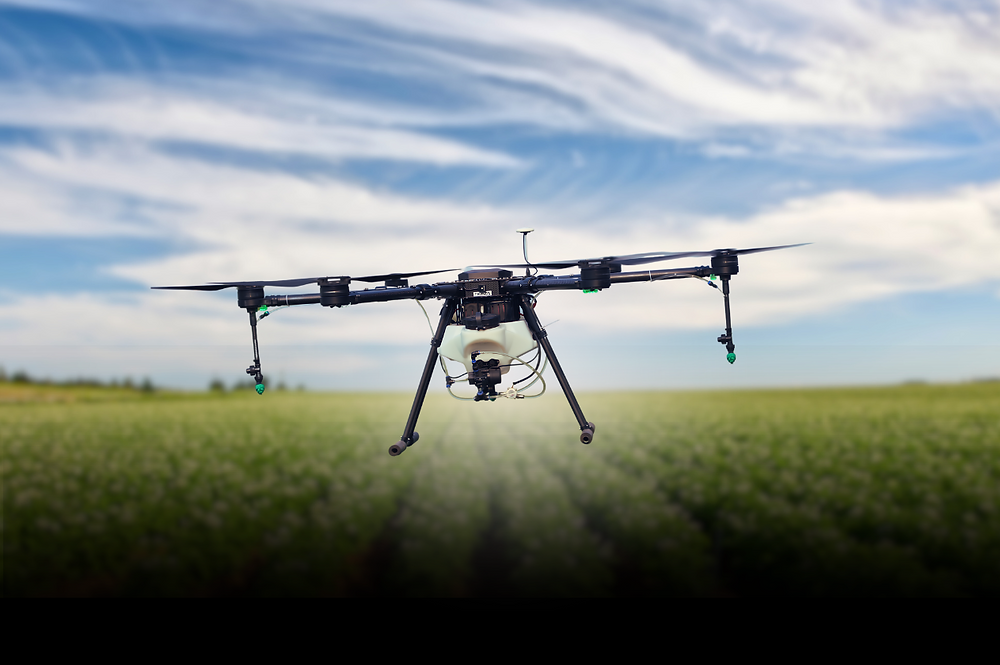

Is the Government Being Misled About Drone-Based Disinfectant Spraying Effectiveness?
Sep 8, 2024
3 min read
1
2
0
Over the past few weeks, we’ve been inundated with reports of various drone companies claiming to have devised solutions for drone-based disinfectant spraying in affected areas. Many assert that their drones cover astonishing distances, with some claims ranging between 15-20 kilometers per day or tens of thousands of square meters. Yet, no one seems to be questioning or measuring the actual effectiveness of these operations.
Our skepticism arose when drone-based disinfectant spraying was first touted as a solution for combating COVID-19. Other countries like China, Brazil, and Spain had already adopted drone-based spraying, which gave the technology some credibility. However, when we received an inquiry about it, we embarked on a study to compare the effectiveness of drone-based spraying against traditional vehicle-mounted methods in and around Hyderabad. Below, we provide insights based on these findings, showcasing our in-house designed and built 10-litre agricultural spraying drone in action.
Drone Capacities, Spray Volumes, and Practical Limitations
The drones being used for these disinfectant operations are typically repurposed agricultural drones designed for pesticide or fungicide spraying. They generally carry 10 to 20-litre tanks and operate at ultra-low volumes, dispensing chemicals at rates between 4 and 30 litres per acre. With an average flight time of 8-15 minutes per battery, these drones can deliver a maximum of 15-20 litres before requiring a refill.
The size of droplets produced by agricultural drone nozzles usually ranges between 100 and 300 microns, with a spray width between 3 and 6 meters. However, international agricultural spraying guidelines suggest that optimal conditions for spraying include temperatures below 30°C, wind speeds below 10 km/h, and a humidity level of above 30%. Under these circumstances, a drone can spray around 60 litres per hour.
Urban Environment Challenges
In an urban setting, the operational challenges for drones increase significantly. Unlike open agricultural fields, cities present obstacles such as trees, buildings, and power lines. As a result, drone speeds are limited to around 4 m/s for safety, reducing the overall coverage area.
Additionally, refilling and battery changes in urban areas often require relocating equipment, unlike in agricultural settings, further reducing efficiency. Droplets also evaporate quickly in hot climates, and spraying is limited to horizontal surfaces, leaving vertical surfaces like walls untreated.
A practical way to test the effectiveness of spray coverage is by using Water Sensitive Paper (WSP), which turns blue upon contact with liquids. When used, we observed that droplets applied by drones were sparse, much like in agricultural applications. However, for disinfectant spraying, complete surface coverage is crucial, and our tests showed inadequate results.
The Real Issue: Effectiveness
The effectiveness of drone-based spraying is questionable in urban environments. Our tests indicate that it would take around 80 litres of disinfectant to cover just one acre effectively, with each drone taking approximately 90-120 minutes to cover this area. This makes the operation impractical and costly. On the other hand, vehicle-based misting machines are faster, cheaper, and more efficient.
Rooftop spraying, often mentioned as a key benefit of drones, is another concern. Controlling the drone from the ground makes it difficult to cover all areas effectively, and increasing the drone’s altitude exacerbates the issue of droplet evaporation. Moreover, spraying rooftops is unnecessary in most cases, especially when access to terraces in high-rise buildings is already restricted.
Our Conclusion
Drone companies are charging between Rs. 10,000 to Rs. 25,000 per day for such services. While their intentions might be noble, we believe the effectiveness of drone-based disinfectant spraying in most cases does not justify the cost. It’s a waste of taxpayer money and resources. Companies advocating for this method may either be unaware of its limitations or deliberately misleading authorities.
While drones offer a contactless spraying solution, the benefits are minimal compared to traditional methods, and the results are often ineffective due to low volumes and environmental conditions. Vehicle-mounted misting machines or even employing stranded workers with proper PPE and battery-operated sprayers would provide a more efficient, effective, and scalable solution.
Our Background
At Thanos Technologies, we have been designing and manufacturing custom agricultural spraying drones for the past three years. Our drones have been tested in collaboration with BAYER in one of the largest global studies on drone-based agricultural spraying. Our insights into the current limitations of drone-based disinfectant spraying are based on this extensive experience.
We invite those with differing opinions to engage in a discussion to help improve our collective efforts and ensure that the Indian drone industry can contribute positively during this crisis.
For more information, please visit:






